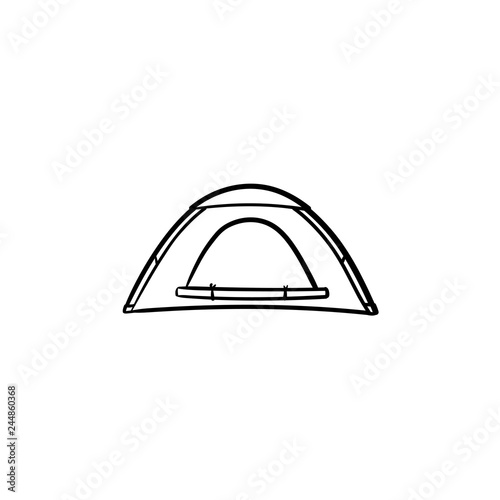As outdoor camping progressed to reflect a more comprehensive cultural shift toward mindfulness and sustainability, outdoor tents style followed suit. Whether it's through intuitive arrangement options or the application of Fitts' Law, modern-day camping tent design remains to introduce and expand camper's alternatives for exterior expedition.
The wedge tent, also known as a wall surface outdoor tents, can be created by putting up the ridgepole atop upright posts and freely staking down each side. This enables even more living and moving around area than an A-frame outdoor tents.
The A-Frame
One of one of the most legendary camping tent layouts is a conventional A-frame. This framework takes its name from its roofline, which resembles the uppercase A. This shape produces a vaulted ceiling that offers an open, roomy sensation inside the home. The sloping walls also make second-level loft space rooms optimal for resting.
In the past, a good scout could set up a canvas A-frame camping tent in 2 minutes or less. A modern-day A-frame cabin can provide the very same convenience of installation, yet with better weather condition defense and even more usable area.
A-frames are a fantastic instance of functional design, which stresses reducing the intricacy of an item so that it can be extra easily understood and utilized. Today, UI/UX developers use this principle to craft user-friendly interface that allow individuals to attain their goals with maximum effectiveness. This approach mirrors the A-frame's origins as an option to human needs. The simpleness of A-frames additionally reflects a wish for outside experiences that balance technological improvement with a much deeper connection to nature.
The Wedge
Whether you are new to wall camping tents or are an experienced camper, selecting the right structure for your canvas sanctuary can seem like a frustrating experience at first. With a lot of alternatives for textile, structures and degrees of protection from the elements to consider, you can easily obtain shed in a sea of lingo.
Luckily, navigating the world of wall camping tents does not have to be so overwhelming. We have actually created our very own system to help you simplify your decisions. With our easy Wedge design, we've gotten rid of the requirement for complicated fabric and frame choices so you can spend more time appreciating your journey and much less time worrying about your sanctuary.
The Baker
The baker outdoor tents is a changed lean-to design camping tent. It is an extremely versatile and beneficial shelter that can be zipped limited versus the components or opened up to let in the warmth of a reflector campfire. The baker was the outdoor tents of choice of numerous logging camps and wilderness canoe travelers in the 1800's. The baker tent likewise obtained notoriety in the very early 1900's when across the country recognized outdoor author Horace Kephart made use of a baker tent at his famous base camp on Dicks Creek in North Carolina.
Choosing the best interior frame, tube size and fabrication is a crucial factor in determining the toughness of your wall surface tent and how it will certainly personalized bag take care of changing weather conditions. Furthermore, a considerable part of your wall surface camping tent's long life and performance is determined by the therapy that it has actually undergone. Bravo's bonded steel inner frameworks are built using superior 1 3/8 inch galvanized tubes and strong bonded angle kits that are braced for added strength.
The Whelen
In a time of increasing automation and urbanization, outdoor camping was a stepping back to standard nature recognition. It provided an opportunity to value blemishes in products and asymmetry of the landscape, to accept the transience of daily rhythms of climbing, relocating, sleeping, and relaxing, and to connect with the natural world at a greatly human level.
Early tent layouts were crafted with an eye to economic climate of space and weight, yet we have actually seen an abandonment of these conventional ideas toward bigger, gangly designs that take longer to establish, require even more cautious planning of the impact, and offer less in regards to weather defense. By doing this, the modern outdoor tents mirrors a social change away from technological advancement and in the direction of mindfulness, sustainability, and admiration for a much more natural world. Similar to tents, UI/UX layout is likewise centered on conference human needs. Fitts' Regulation, for instance, teaches us to focus on the size and closeness of interactive aspects in order to promote quicker and more effective user communications.
